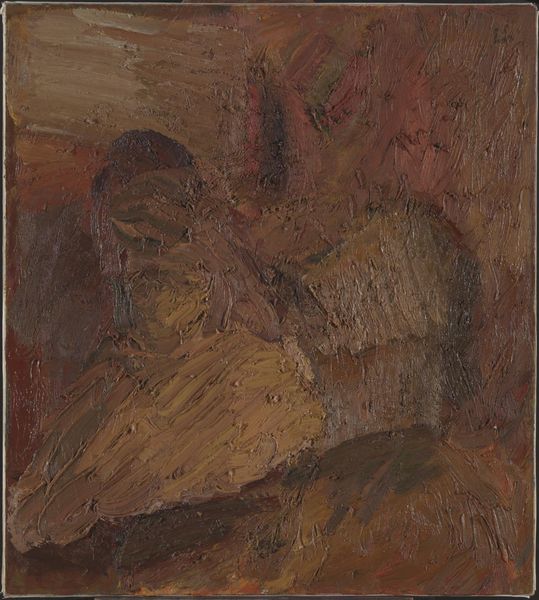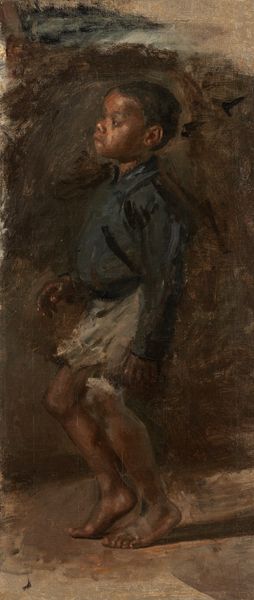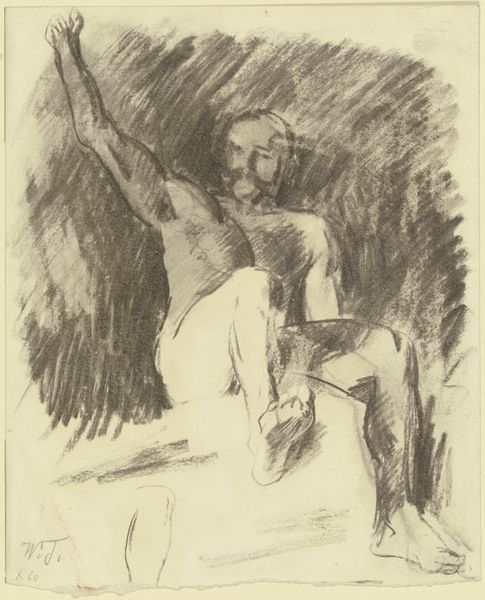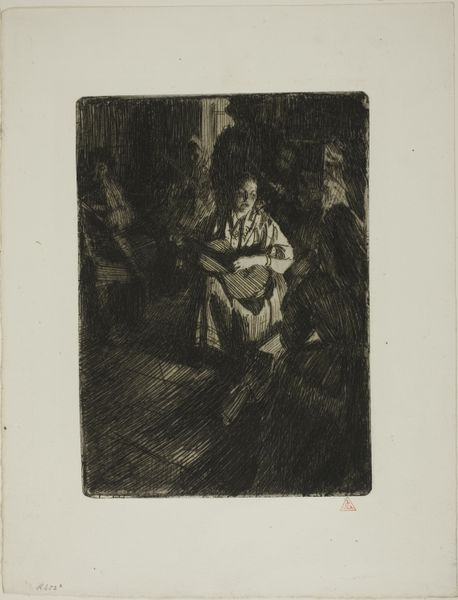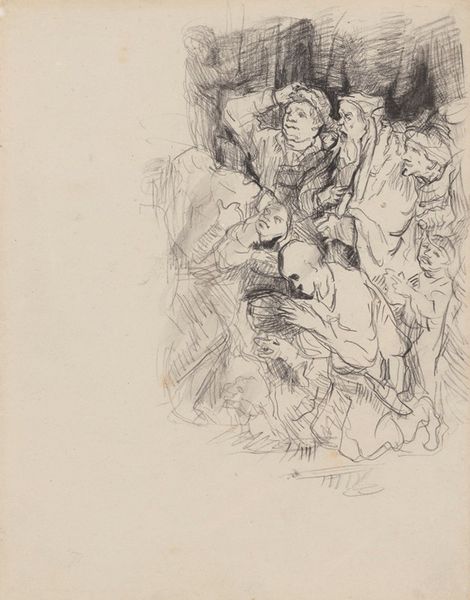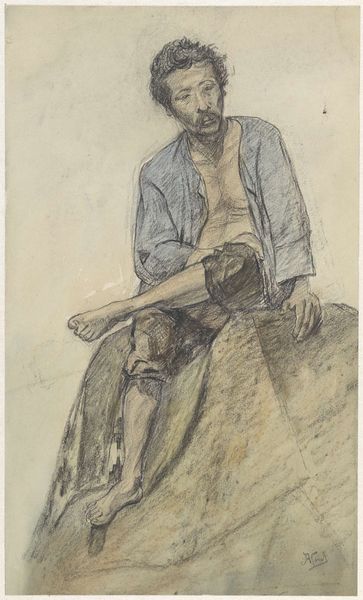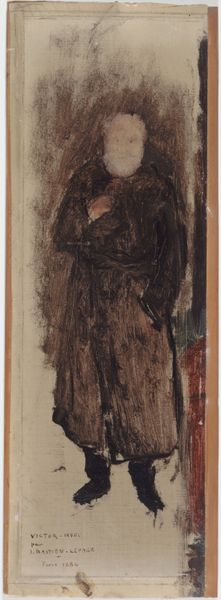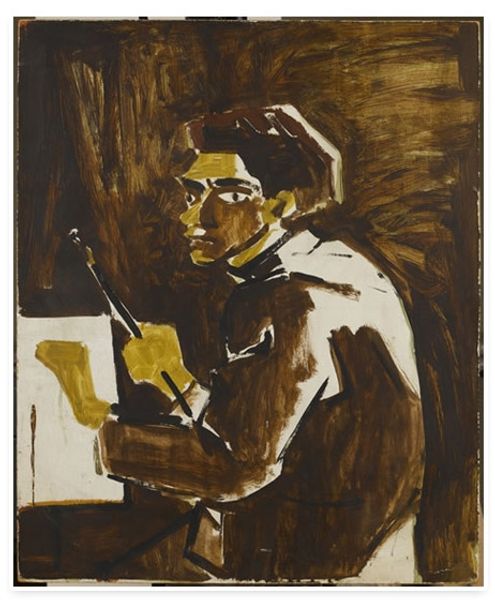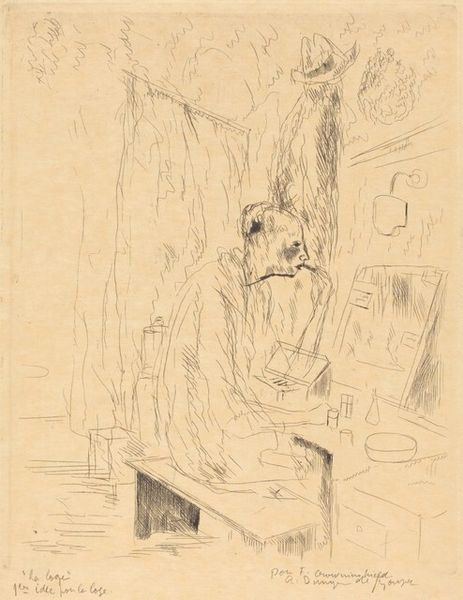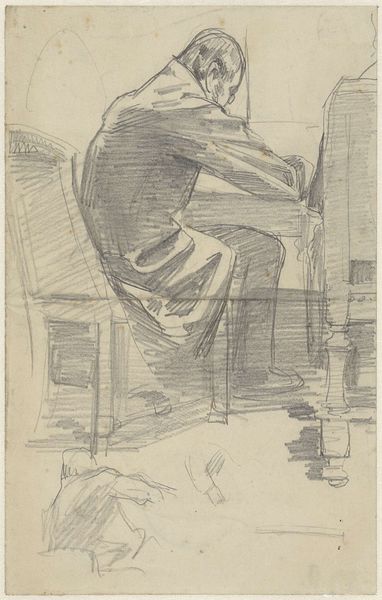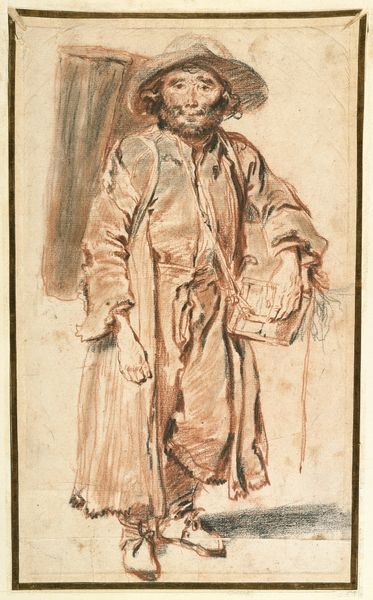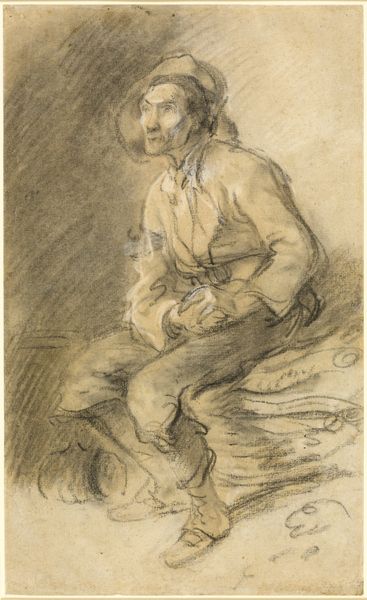
oil-paint, impasto
#
oil-paint
#
figuration
#
oil painting
#
impasto
#
expressionism
#
symbolism
#
genre-painting
Dimensions: 65.5 cm (height) x 58 cm (width) (Netto)
Curator: Standing before us is Oluf Hartmann’s “Two Men Fighting,” likely painted between 1894 and 1910. It's an oil painting rendered with striking impasto, currently residing at the SMK, the National Gallery of Denmark. What’s your immediate reaction to this piece? Editor: Well, it certainly evokes a sense of contained struggle. The colors are muted, almost melancholic, but the thick application of paint gives it a raw, visceral energy. I see more a dance of aggression than an all-out brawl. Curator: Indeed. Hartmann's choice of oil paint is significant. Its ability to capture light and texture adds to the drama, highlighting the physicality of the conflict and the almost sculptural quality of the forms. The way he has built up layers creates depth and movement. This tactile application encourages the viewer to examine the artwork’s materiality, acknowledging the labor inherent to the creative process. Editor: Absolutely. And situating this piece historically, we must consider the sociopolitical context of the late 19th and early 20th centuries. Consider the backdrop of social unrest and the burgeoning labor movement. What is it about the depiction of masculinity here—is it commenting on working-class tensions? I see reflections of class struggle perhaps portrayed through this violent encounter. Curator: That's a compelling interpretation. One could argue that Hartmann's background might have informed his choice to depict this type of physical labor and the conflicts it produces. Hartmann, in that era, may well have considered his paintings a form of labour that spoke about larger issues. Editor: Exactly. The figures are locked in combat, their faces obscured, stripped of individuality. Is this a comment on the dehumanizing effects of social inequity and the cycle of violence it breeds? There's a sense of anonymity here that is deeply unsettling and reflects similar conflicts still apparent today. Curator: The rough, almost unfinished quality, certainly invites questions about the intention of the artist, particularly regarding audience and display. Were these scenes intended for private contemplation or public consumption? It pushes the traditional boundaries of academic painting toward the realm of modern, more socially conscious art. Editor: Hartmann's painting presents enduring and unresolved questions about class, conflict, and the role of art as a social mirror reflecting societal realities across generations. Curator: I agree. Reflecting on this piece really prompts us to reconsider not only what we see in front of us but how its physical creation connects to broader societal forces.
Comments
No comments
Be the first to comment and join the conversation on the ultimate creative platform.
